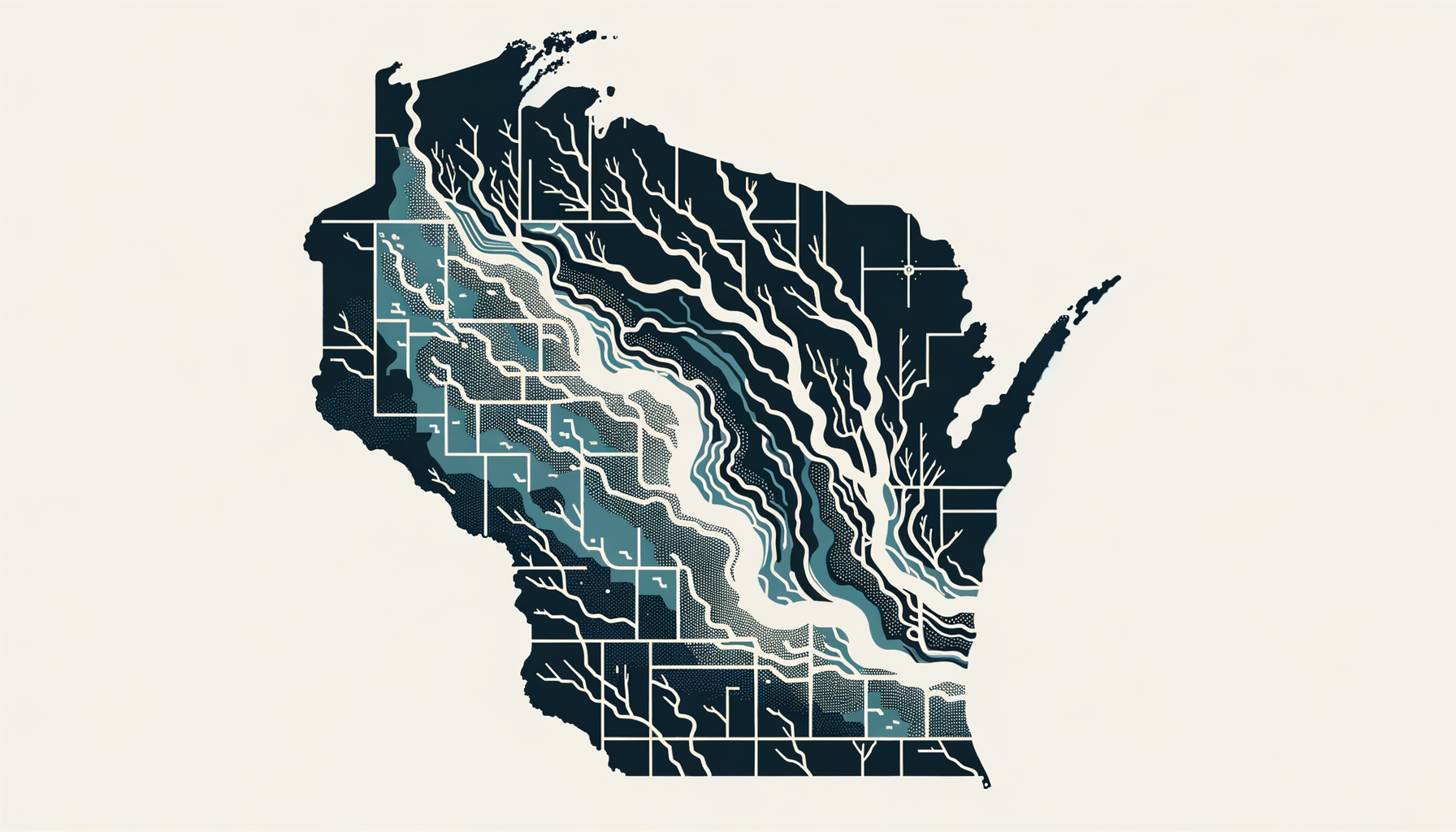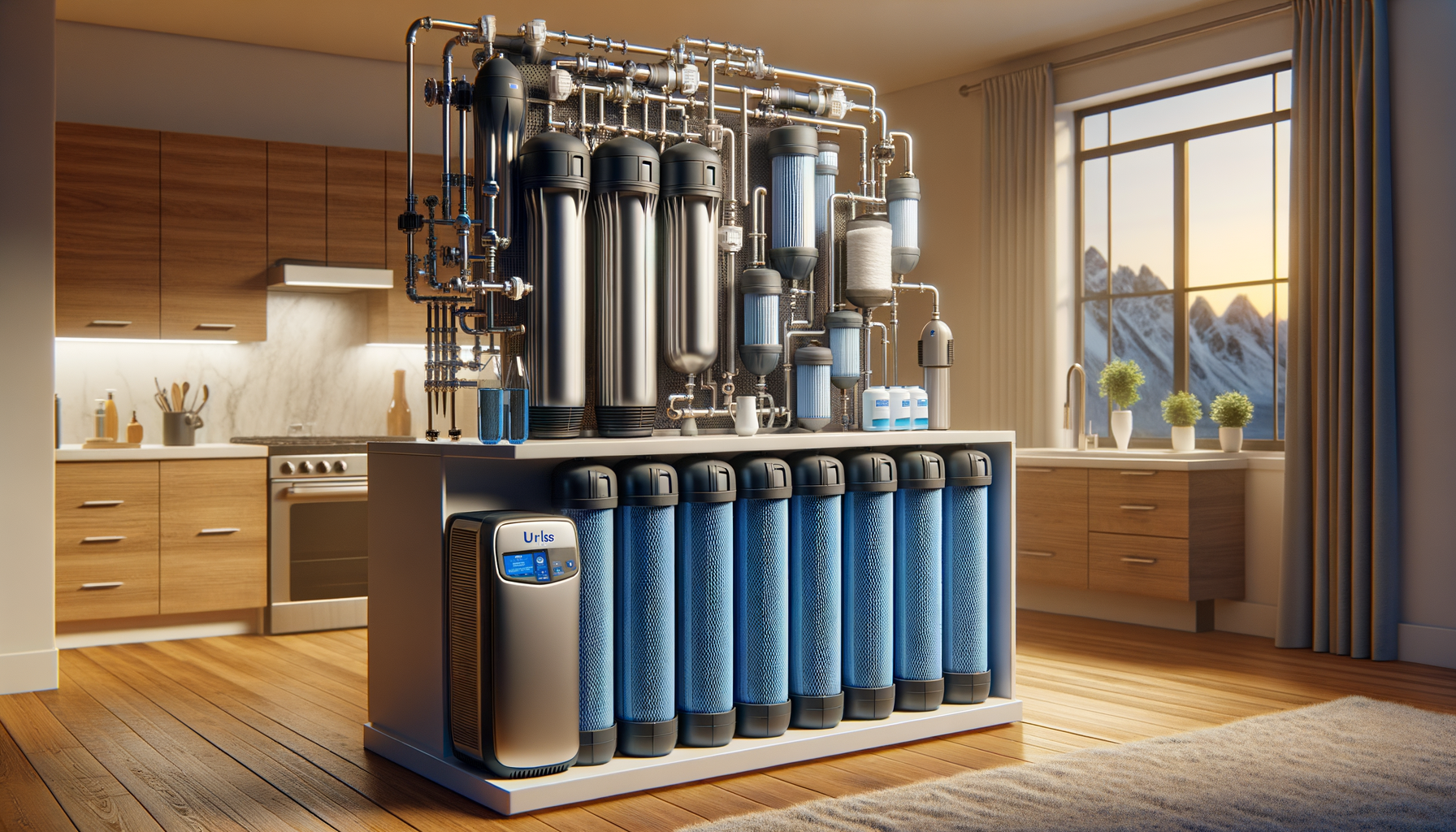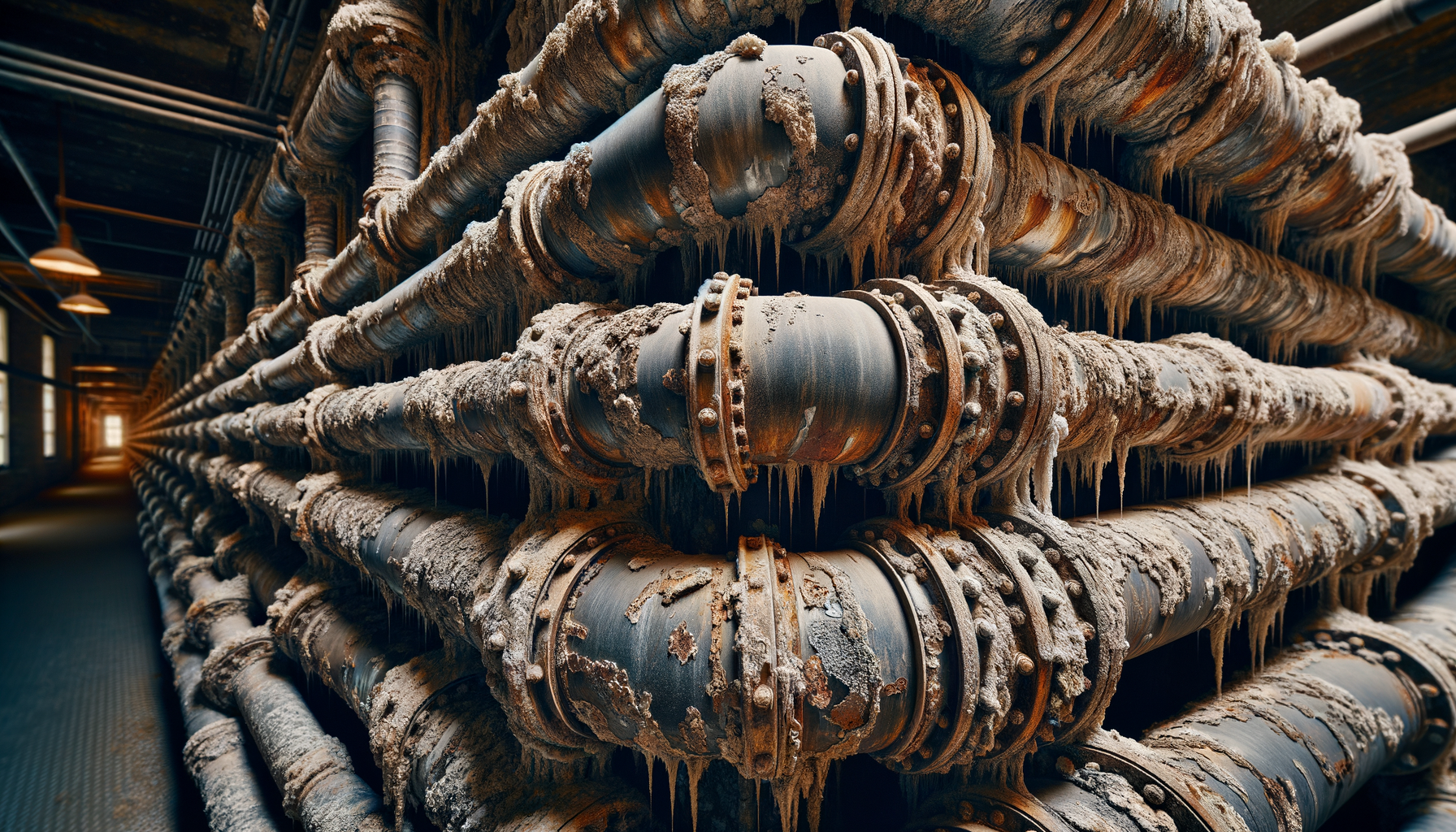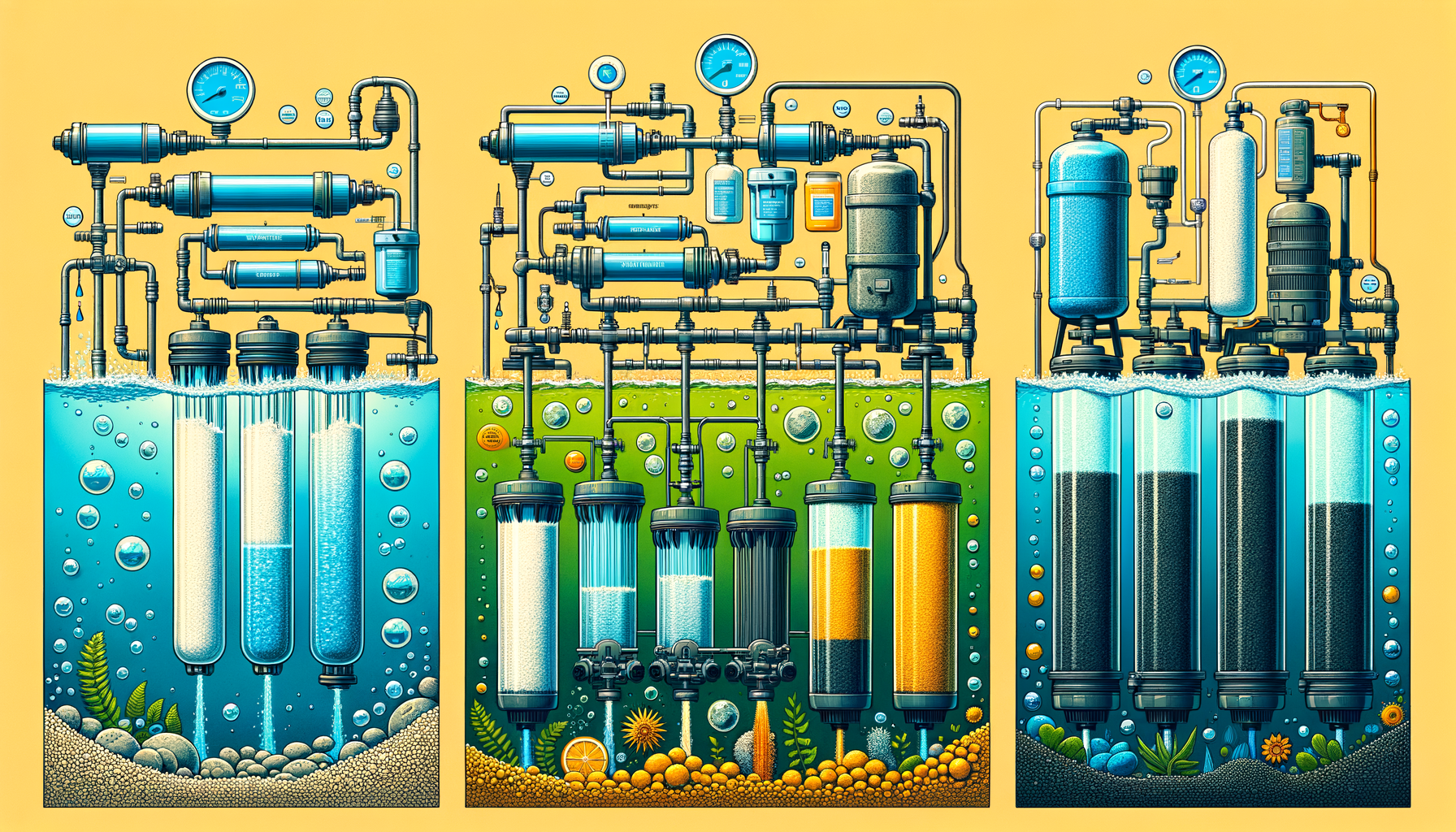Comprehensive Guide to Water Quality in Wisconsin State: Contaminants, Issues, and Water Filtration Solutions
by Ryan Moreau / updated February 13th, 2025
Wisconsin is known for its abundant water resources, with over 15,000 lakes, numerous rivers, and extensive groundwater aquifers. From the shores of Lake Michigan and Lake Superior to the scenic Wisconsin River, water is integral to the state’s identity and economy. However, Wisconsin faces a variety of water quality challenges due to agricultural activities, industrial pollution, and aging infrastructure. In this comprehensive guide, we delve into the common contaminants found in Wisconsin’s water, regional water quality challenges, and effective filtration solutions. Begin by using our Water Quality Tool to obtain a customized analysis of your local water conditions.
Overview of Wisconsin’s Water Sources
Wisconsin’s water supply comes from a diverse array of sources, each contributing significantly to the state’s water needs. Key water sources include:
- Great Lakes: Lake Michigan and Lake Superior border Wisconsin to the east and north, providing water for numerous municipalities and industrial uses.
- Inland Lakes: With over 15,000 lakes, including Lake Winnebago and the Chain O’ Lakes, these serve as sources for recreation and local water supplies.
- Rivers: Major rivers such as the Wisconsin River, Fox River, and Mississippi River are vital for transportation, industry, and as water sources.
- Groundwater Aquifers: A significant portion of Wisconsin’s population relies on groundwater from aquifers, especially in rural areas where private wells are common.
Ensuring the quality of water from these varied sources requires ongoing monitoring and management, given the state’s agricultural and industrial activities that can impact water resources.
Common Water Quality Contaminants in Wisconsin
Wisconsin faces several water quality issues due to factors such as agricultural runoff, industrial discharges, and naturally occurring minerals. To understand what may affect your area, use our Water Quality Tool and review these prevalent contaminants:
1. Nitrates
Nitrate contamination is a significant concern in Wisconsin, primarily due to agricultural practices. Fertilizer use and manure spreading can lead to elevated nitrate levels in groundwater, especially affecting private wells. High nitrate levels pose health risks such as methemoglobinemia in infants.
Water Filtration Options for Nitrates: Reverse Osmosis Water Filters
2. Bacteria and Microbial Contaminants
Private wells in rural Wisconsin areas are at risk of bacterial contamination from agricultural runoff and septic system failures. Contaminants like E.coli and coliform bacteria can cause gastrointestinal illnesses.
Water Filtration Options for Bacteria: UV Water Purifiers, Reverse Osmosis Systems with UV Disinfection
3. Arsenic
Arsenic occurs naturally in some Wisconsin aquifers, especially in northeastern parts of the state. Long-term exposure to arsenic in drinking water can lead to various health issues, including skin lesions and increased cancer risk.
Water Filtration Options for Arsenic: Reverse Osmosis Systems, Adsorptive Media Filters
4. Radium
Some deep sandstone aquifers in Wisconsin contain elevated levels of radium, a radioactive element. Prolonged exposure to radium can increase the risk of bone cancer.
Water Filtration Options for Radium: Water Softeners (Ion Exchange), Reverse Osmosis Systems
5. Lead and Copper
Aging water infrastructure in some Wisconsin cities, such as Milwaukee, can lead to lead and copper leaching into the water supply. These metals can have serious health impacts, particularly for young children.
Water Filtration Options for Lead and Copper: Reverse Osmosis Systems, Activated Carbon Filters certified for lead removal
6. Atrazine and Other Pesticides
Widely used herbicides like atrazine can contaminate groundwater through agricultural runoff. Atrazine exposure has been linked to hormonal disruptions and reproductive issues.
Water Filtration Options for Pesticides: Activated Carbon Filters, Reverse Osmosis Systems
7. Volatile Organic Compounds (VOCs)
Industrial activities and improper disposal of chemicals have led to VOC contamination in certain areas. Compounds like trichloroethylene (TCE) and benzene can have significant health impacts.
Water Filtration Options for VOCs: Activated Carbon Filters
8. Iron and Manganese
High levels of iron and manganese are common in Wisconsin groundwater. While not typically a health concern, they can cause staining, unpleasant taste, and odor issues.
Water Filtration Options for Iron and Manganese: Iron Filters, Oxidizing Filters
9. Sulfate
Elevated sulfate levels can occur naturally or from industrial discharges. High sulfate levels can cause laxative effects and impact taste.
Water Filtration Options for Sulfate: Reverse Osmosis Systems, Anion Exchange Filters
Regional Water Quality Challenges in Wisconsin
Wisconsin’s diverse geography and land use practices contribute to regional water quality challenges. The Wisconsin Department of Natural Resources (DNR) identifies several key issues:
1. Central Wisconsin: Nitrate Contamination
The Central Sands region, with its intensive agriculture, faces significant nitrate contamination in groundwater. Leaching from fertilizers and manure is a primary contributor.
2. Northeast Wisconsin: Arsenic in Groundwater
Counties such as Outagamie and Winnebago have naturally occurring arsenic in bedrock formations. Well owners in these areas are advised to test for arsenic regularly.
3. Milwaukee and Urban Areas: Lead Pipes
Older cities like Milwaukee have extensive networks of lead service lines. The city is actively working to replace these lines, but in the meantime, residents may be exposed to lead in their drinking water.
General Water Characteristics in Wisconsin
Understanding the general characteristics of Wisconsin’s water helps in selecting appropriate treatment solutions:
1. Water Hardness
Hard water is common throughout Wisconsin due to high levels of calcium and magnesium in groundwater. This can lead to scale buildup in pipes, reduce soap effectiveness, and affect appliances.
For households dealing with hard water, water softeners are recommended. If you’re unsure whether you need a water softener or which type suits your family’s needs, try our Water Softener Calculator for personalized guidance.
2. High Iron Levels
Many private wells in Wisconsin have high iron concentrations, resulting in reddish staining on fixtures and a metallic taste. While not harmful to health, it can be aesthetically displeasing.
Installing an iron filter can effectively remove iron and improve water clarity and taste.
3. Sulfur Odor
Some Wisconsin water supplies have a “rotten egg” smell due to hydrogen sulfide gas. This gas can be produced by certain bacteria in groundwater or from the decay of organic matter.
- Aesthetic Concerns: While usually not harmful, the odor can be unpleasant and affect water usage.
- Pipe Corrosion: In high concentrations, hydrogen sulfide can corrode metal pipes.
Aeration systems or oxidizing filters can help eliminate sulfur odors from water.
Utilizing the Water Quality Tool for Wisconsin Residents
To take control of your water quality, Wisconsin residents can leverage our Water Quality Tool to:
- Enter their zip code for a comprehensive analysis of local water sources
- Access data on common contaminants affecting their area
- Get personalized recommendations for appropriate filtration systems based on specific water quality concerns
Recommended Filtration Solutions for Common Wisconsin Contaminants
Considering the typical contaminants found in Wisconsin’s water, the following filtration systems are highly effective:
1. Reverse Osmosis Systems
Reverse Osmosis Systems are capable of removing a wide range of contaminants, including nitrates, arsenic, radium, and other dissolved solids.
2. UV Water Purifiers
UV Water Purifiers effectively eliminate bacteria and viruses, making them ideal for treating microbial contamination in private wells.
3. Iron Filtration Systems
Iron Filters remove excess iron and manganese, improving taste and preventing staining.
4. Water Softeners
Water Softeners address hard water issues by removing calcium and magnesium ions through ion exchange.
5. Activated Carbon Filters
Activated Carbon Filters are effective at removing organic chemicals, pesticides, and improving taste and odor.
Local Water Testing Services in Wisconsin
Accurate water testing is crucial to identify contaminants in your water supply. We recommend using SimpleLab for comprehensive water quality analysis. Their easy-to-use testing kits and detailed lab reports help you make informed decisions about water treatment options.
Case Studies: Addressing Water Quality Issues in Wisconsin
These examples illustrate how different communities in Wisconsin are tackling water quality challenges:
1. Kewaunee County: Combating Nitrate Contamination
Kewaunee County has faced serious nitrate issues due to concentrated animal feeding operations (CAFOs). Community efforts have included promoting best management practices in agriculture and installing reverse osmosis systems in affected households.
2. City of Waukesha: Dealing with Radium Levels
Waukesha’s water supply exceeded federal standards for radium. The city secured approval to draw water from Lake Michigan and implemented advanced treatment processes to ensure compliance with safety standards.
3. Milwaukee: Lead Service Line Replacement
Milwaukee has initiated programs to replace lead service lines throughout the city. In the meantime, residents are encouraged to use certified filters to remove lead from their drinking water.
Call to Action
Wisconsin’s abundant water resources require diligent stewardship to maintain their quality. Understanding local water challenges and implementing suitable filtration solutions are vital steps in protecting your household’s health.
Begin by entering your zip code into our Water Quality Tool to obtain detailed insights into your water supply. Explore our filter review articles to find the most effective treatment options for your needs. Finally, confirm your water’s quality with comprehensive water testing services to ensure your home has access to clean, safe water.






